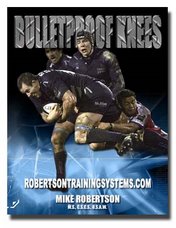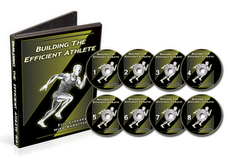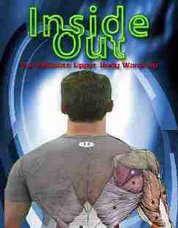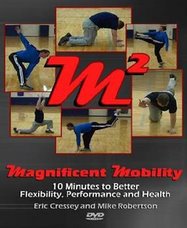By Dr. John Berardi
Sedentary individuals should drink at least 2L or about 8 cups of water per day, athletes should drink at least 3L or about 12 cups of water per day, and athletes in hot weather climates drink at least 4L or about 16 cups of water per day.
Since following these recommendations can prevent dehydration and can actually assist with fat loss, you’d have to be a desiccated fool to ignore them.
However, try as they might, some individuals find it difficult to ingest up to a gallon of water per day. So try out these three proven strategies for increasing water ingestion:
1- Drink cold water – cold water is more palatable, improving “mouth feel” and ingestion
2- Add lemon – lemon increases urge to drink and also kills bacteria
3- Chuggables – always carry some sort of jug of water around to ensure you’re drinking. Rubbermaid makes a nice blue top container (Chuggables) that we recommend to our clients.
If you like this tip and want to learn more about JB and his products, check out his Precision Nutrition website.
High Octane Corrective Exercise and Performance Enhancement | www.RobertsonTrainingSystems.com
Monday, October 29, 2007
Wednesday, October 24, 2007
Use the "Muscle Beach" Effect!
Whenever applicable use the muscle beach effect. Stick your chest out as far as you can like you are at the beach; this will not only put a small arch in your upper and lower back, but it will also make your spine more rigid. This, combined with abdominal bracing (tightening the abdominal and gluteal musculature as if you are about to be punched), will not only help prevent injury, but help you add weight to the bar as well.
Tuesday, October 23, 2007
Mood Eating
By Dr. John Berardi
Most people eat based on their mood and/or some subjective feelings of hunger. They don’t eat based on what their bodies need. Think of it this way: you’re about to take a long drive on a stretch of highway with no gas station. Do you fail to stop for gas before you hit the road because you’re "not in the mood?" Of course not. Think of eating in the same way. Eating fuels your metabolic engine. So it’s time to start feeling like eating so that you can stop feeling like you’re scrawny.
If you like this tip and want to learn more about JB and his products, check out his Precision Nutrition website.
Mike Robertson
Most people eat based on their mood and/or some subjective feelings of hunger. They don’t eat based on what their bodies need. Think of it this way: you’re about to take a long drive on a stretch of highway with no gas station. Do you fail to stop for gas before you hit the road because you’re "not in the mood?" Of course not. Think of eating in the same way. Eating fuels your metabolic engine. So it’s time to start feeling like eating so that you can stop feeling like you’re scrawny.
If you like this tip and want to learn more about JB and his products, check out his Precision Nutrition website.
Mike Robertson
Labels:
John Berardi,
Mike Robertson,
Precision Nutrition
Thursday, October 18, 2007
Try the Hip Extension Test to see if your Glutes are Firing
The hip extension test is a simple way to determine how well your posterior chain is functioning. Lay face down on a table with your ankles hanging off the edge. You will either have to video tape yourself or have someone watch you. Raise one leg a few inches off the table; if the arch in your back increases or if your knee flexes (bends) then your glutes are not working properly. Try stretching your hip flexors and hamstrings, while adding in specific glute work to improve motor recruitment and control.
As well, if you want more tests just like this one, be sure to check out the "Building the Efficient Athlete" DVD series when it's released in a few months!
Mike Robertson
Help Your Clients Acheive Long-Term Knee Health
As well, if you want more tests just like this one, be sure to check out the "Building the Efficient Athlete" DVD series when it's released in a few months!
Mike Robertson
Help Your Clients Acheive Long-Term Knee Health
Wednesday, October 17, 2007
Toe-Out To Increase Your Depth
Most people have trouble achieving depth in the squat because their feet are pointed straight ahead. Try this for added effect: Set your feet up at the width you normally squat, and then point your toes straight forward to see how deep you can go with good form. Now, turn you toes out slightly and see how much farther you can go down. Not only will this help improve your depth, but turning the toes out gives you a wider base of support and improves stability.
Tuesday, October 16, 2007
Check the Glutes for Low Back pain
A lot of people I work with in a rehab setting think that their low back pain is due to their lower back being weak, tight or a variety of other reasons. Quite frequently, however, lower back pain originates in the glute medius muscle. People with glute medius adhesions or trigger points often state that they have low back pain at the top of their posterior ilium or hip bone. Good ART practitioners and massage therapists will often work this area over, but the foam roller is a great tool as well.
Lie on your side with the "meaty" part of your lateral glutes (just posterior to the head of the femur) resting on the roller. Balance on one elbow with the same side leg on the ground and roll that lateral aspect of your glutes from top to bottom. If you find a “hot spot” or trigger point, it helps if you hold on that position for a 15-20 seconds. The foam roller isn’t going to cure the underlying pathology in your back pain, but it can definitely help relieve some pain and get you moving again!
Check out my Feel Better for 10 Bucks article for more great foam roller exercises.
Mike Robertson
Lie on your side with the "meaty" part of your lateral glutes (just posterior to the head of the femur) resting on the roller. Balance on one elbow with the same side leg on the ground and roll that lateral aspect of your glutes from top to bottom. If you find a “hot spot” or trigger point, it helps if you hold on that position for a 15-20 seconds. The foam roller isn’t going to cure the underlying pathology in your back pain, but it can definitely help relieve some pain and get you moving again!
Check out my Feel Better for 10 Bucks article for more great foam roller exercises.
Mike Robertson
Monday, October 15, 2007
Change the Lunge to Change the Muscles
Simply changing the midpoint position of the lunging foot can dramatically change the musculature used. For example, a short-stroke lunge puts an increased demand on the quadriceps. A moderate lunge balances the load between the glutes, hamstrings and quads. Finally, a long-stroke or extended lunge really blasts the glutes and hams.
Still not enough variation? Try lunges onto a box for increased recruitment in the VMO, glutes and hamstrings. As well, a lateral or angled lunge will require increased recruitment of the hip ab- and adductors as well. With all these variations, there’s no excuse not to develop some steel wheels!
If you’d like a more in-depth discussion of these lunges, check out my Single Leg Supplements article featured previously on T-Nation.
Mike Robertson
The Ultimate Upper Body Warm-Up
Still not enough variation? Try lunges onto a box for increased recruitment in the VMO, glutes and hamstrings. As well, a lateral or angled lunge will require increased recruitment of the hip ab- and adductors as well. With all these variations, there’s no excuse not to develop some steel wheels!
If you’d like a more in-depth discussion of these lunges, check out my Single Leg Supplements article featured previously on T-Nation.
Mike Robertson
The Ultimate Upper Body Warm-Up
Subscribe to:
Posts (Atom)








